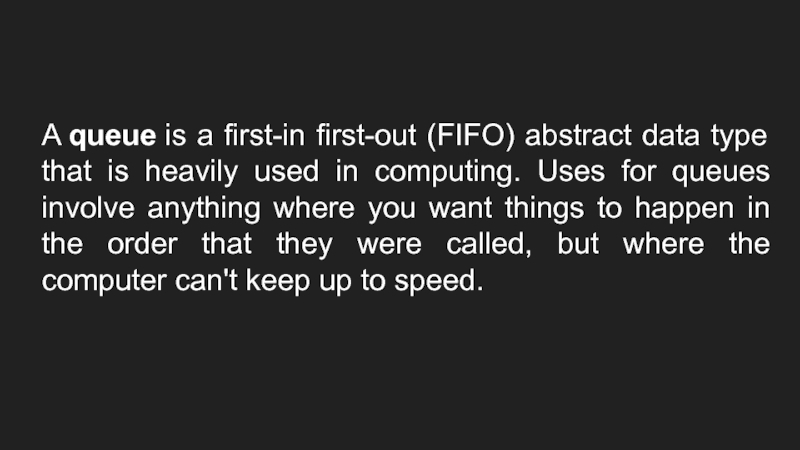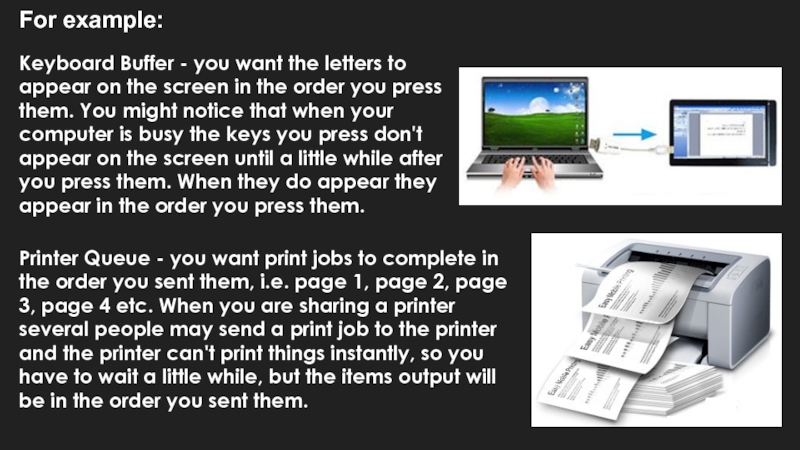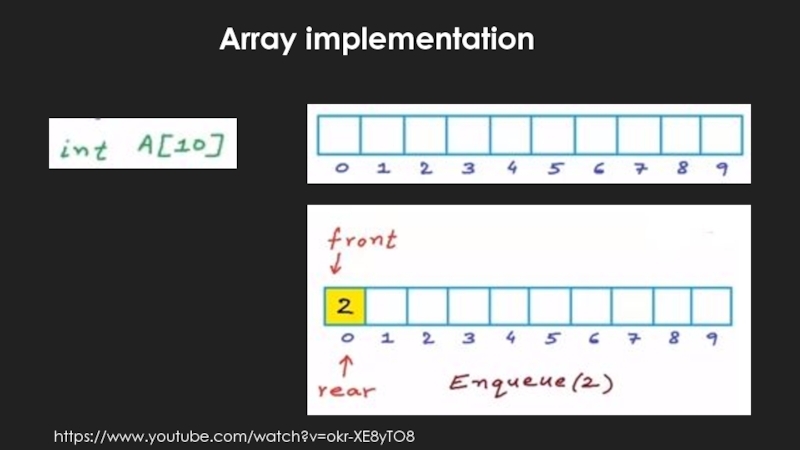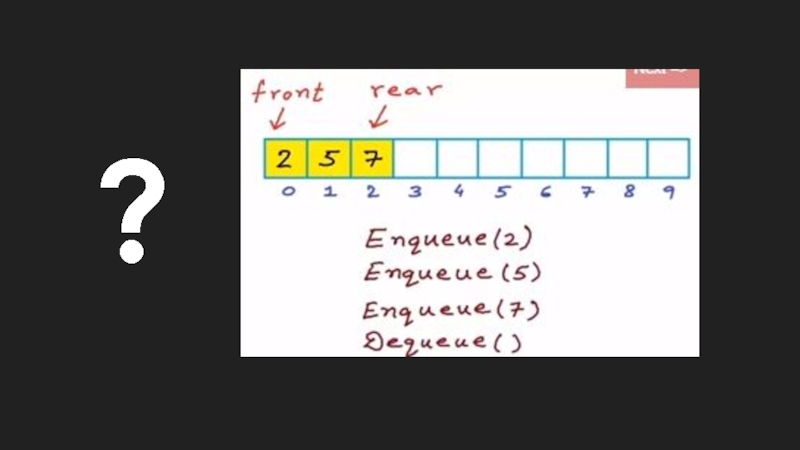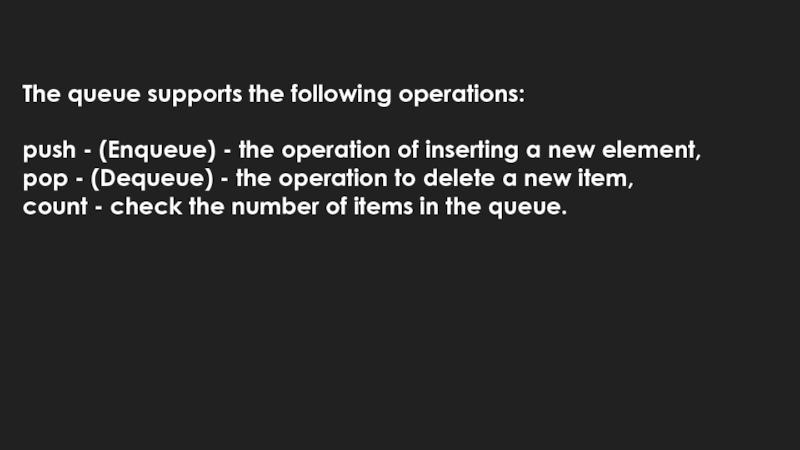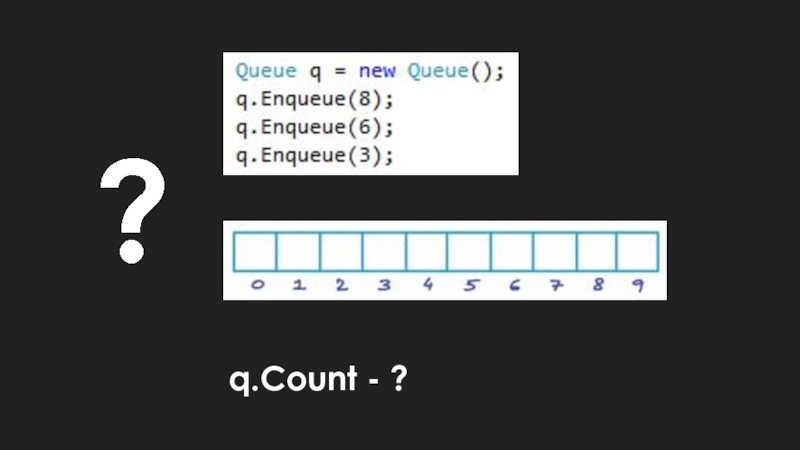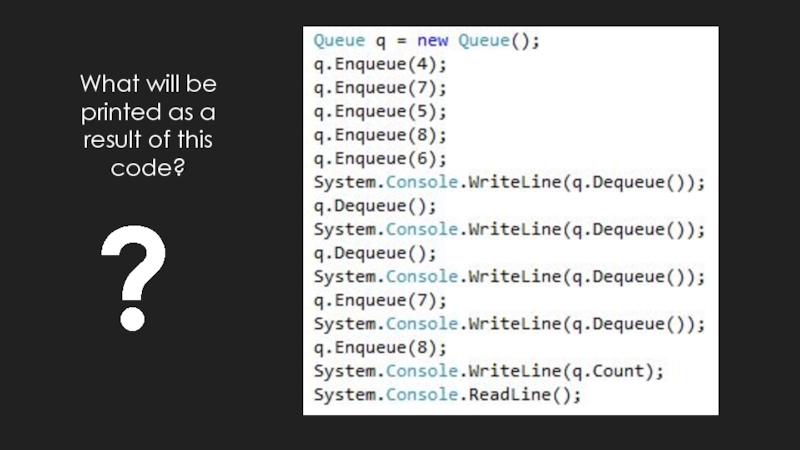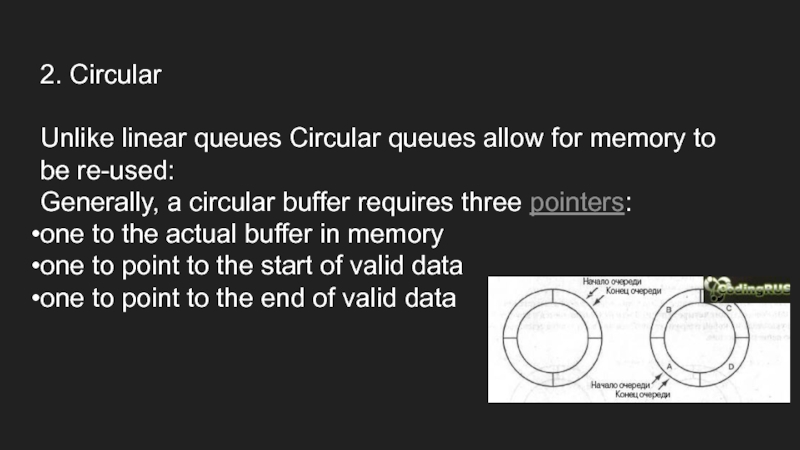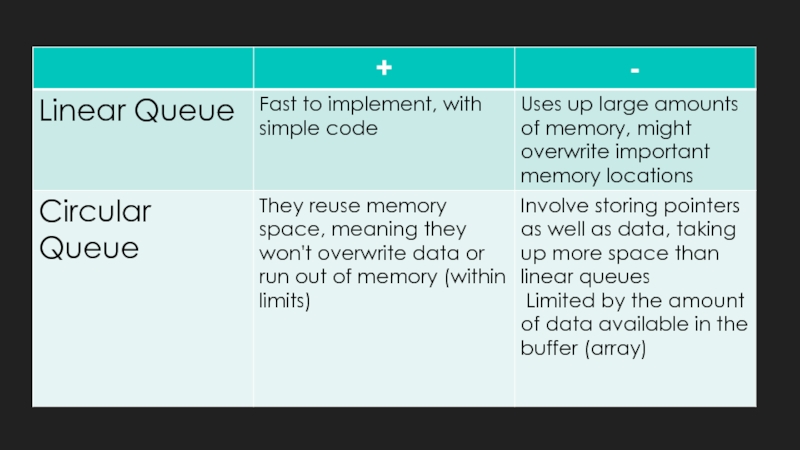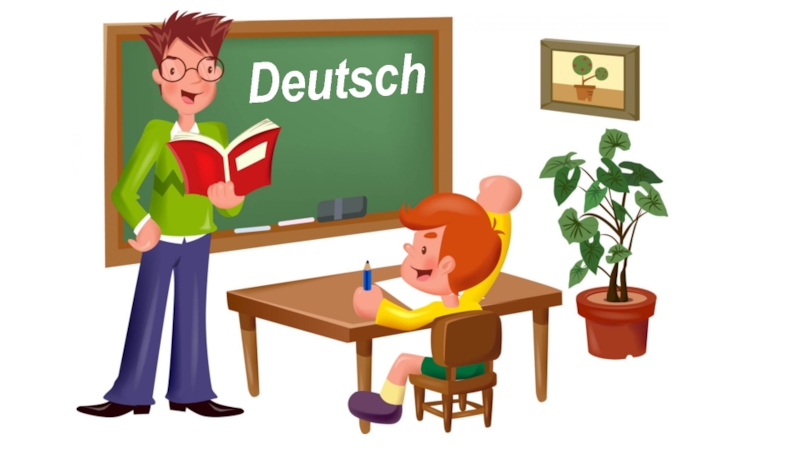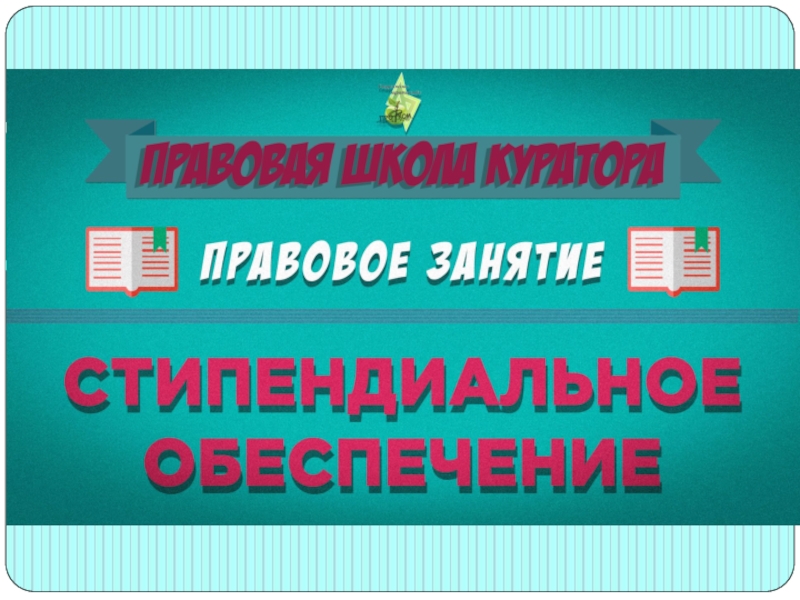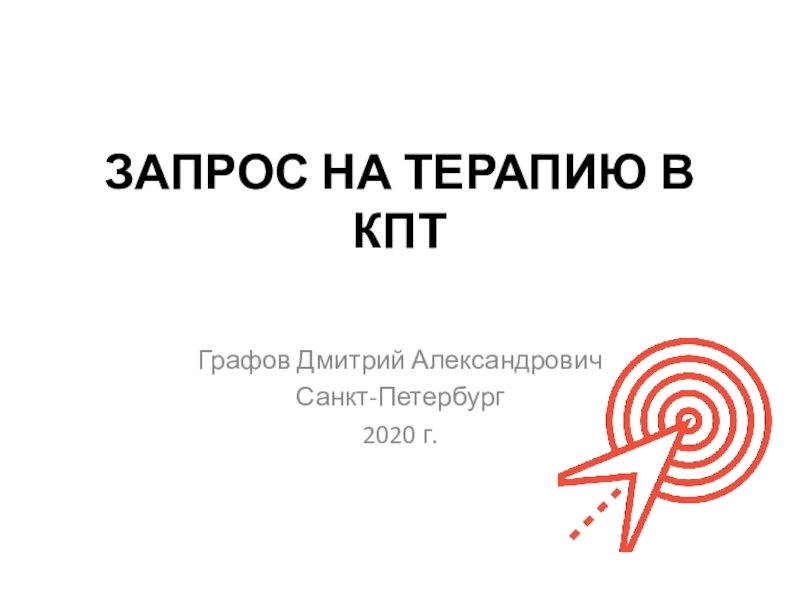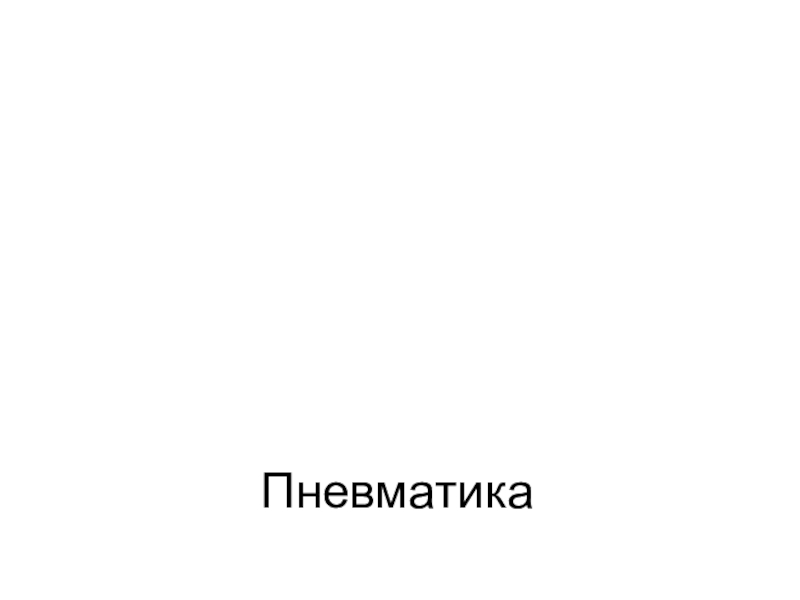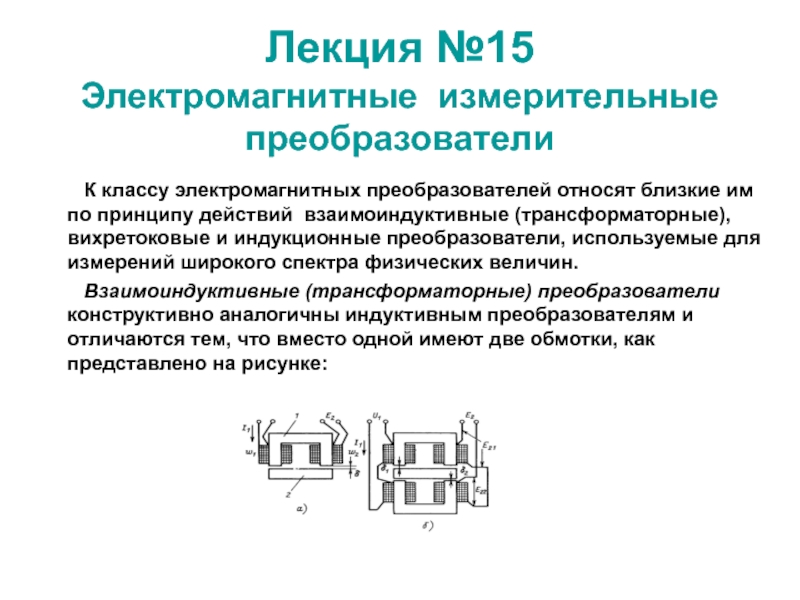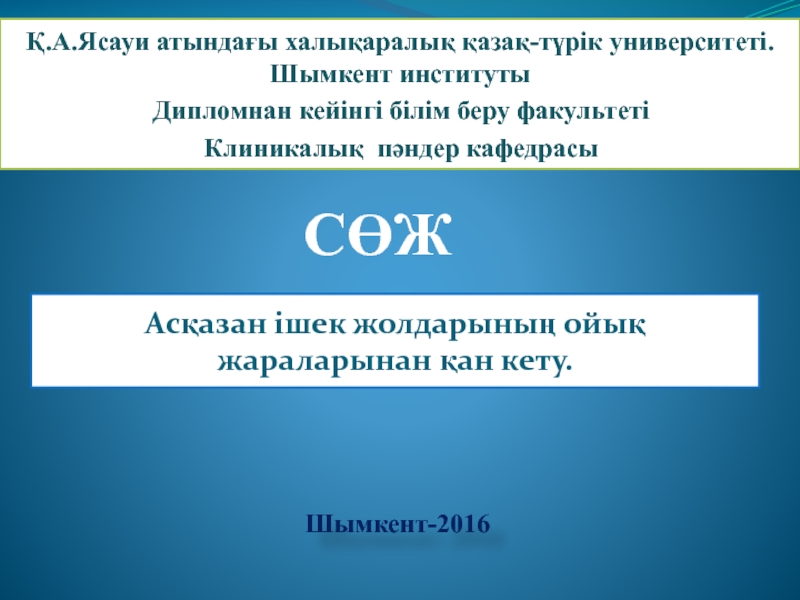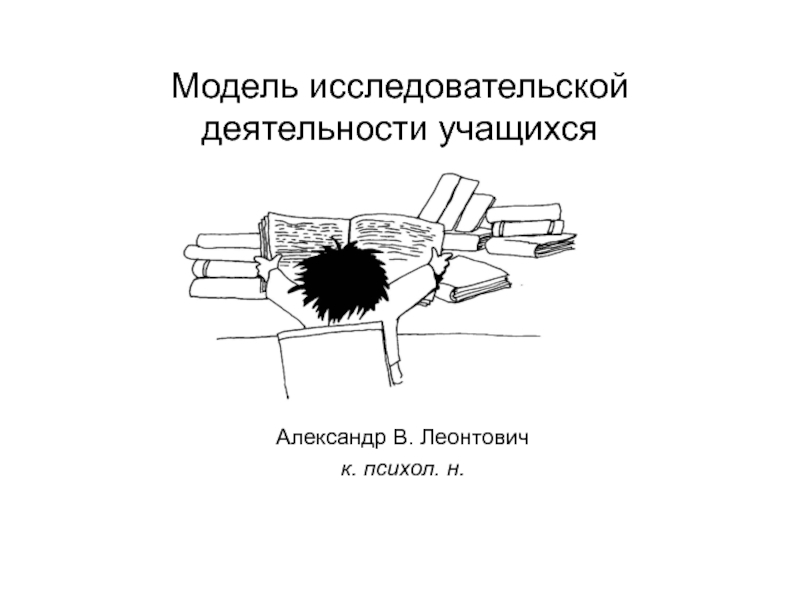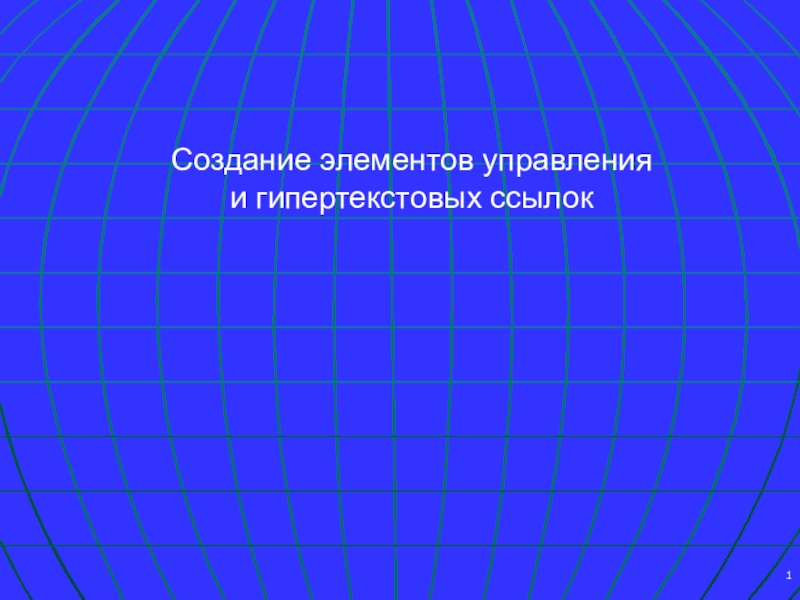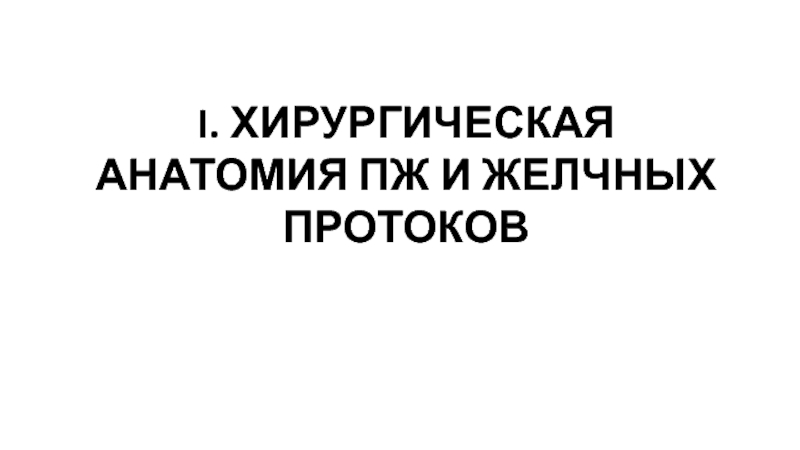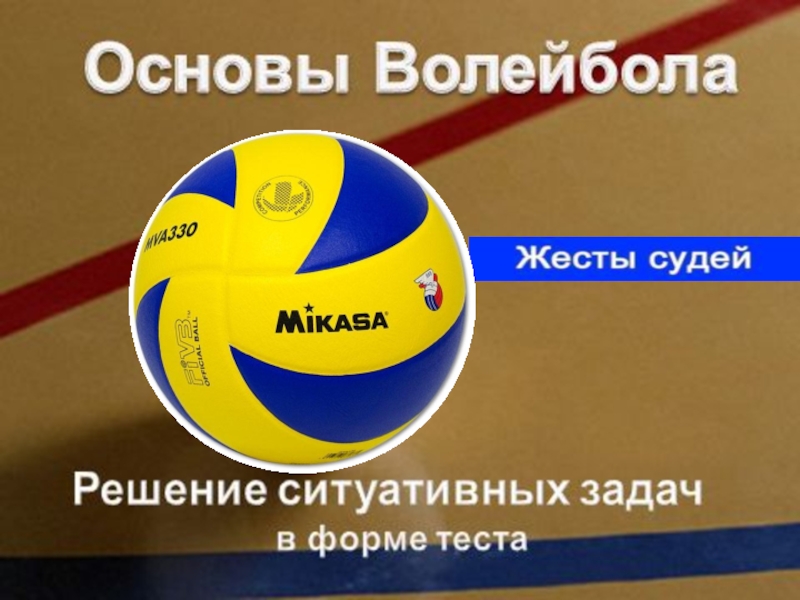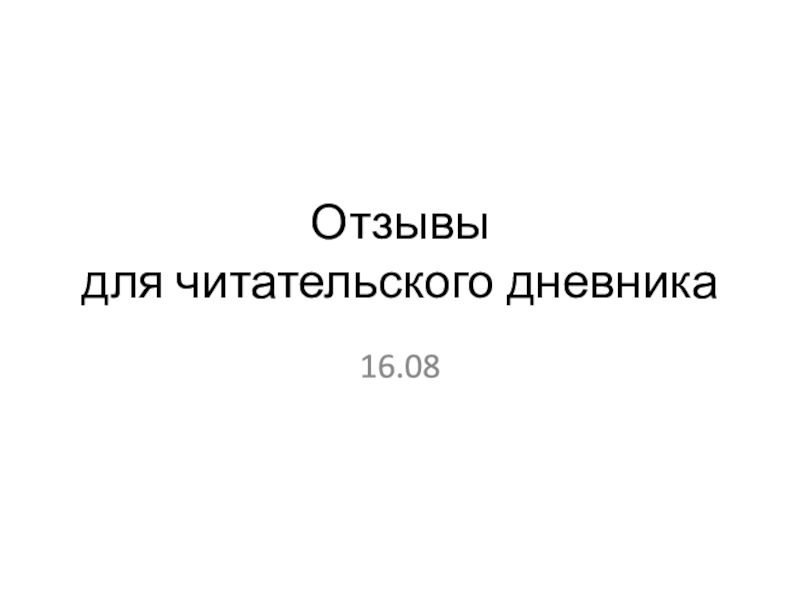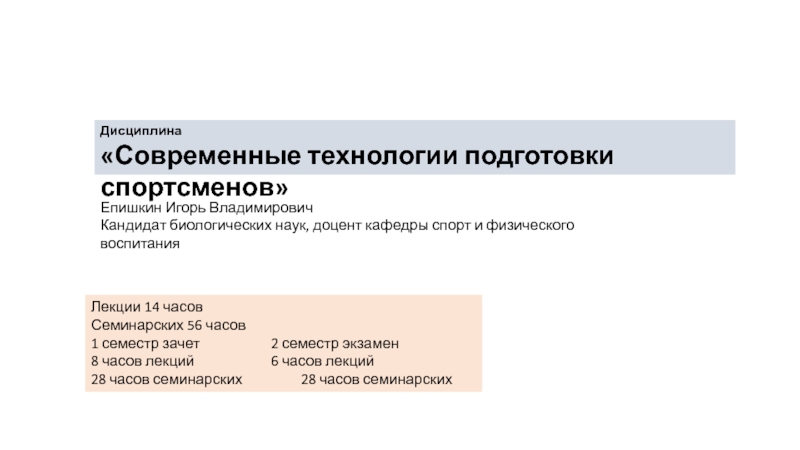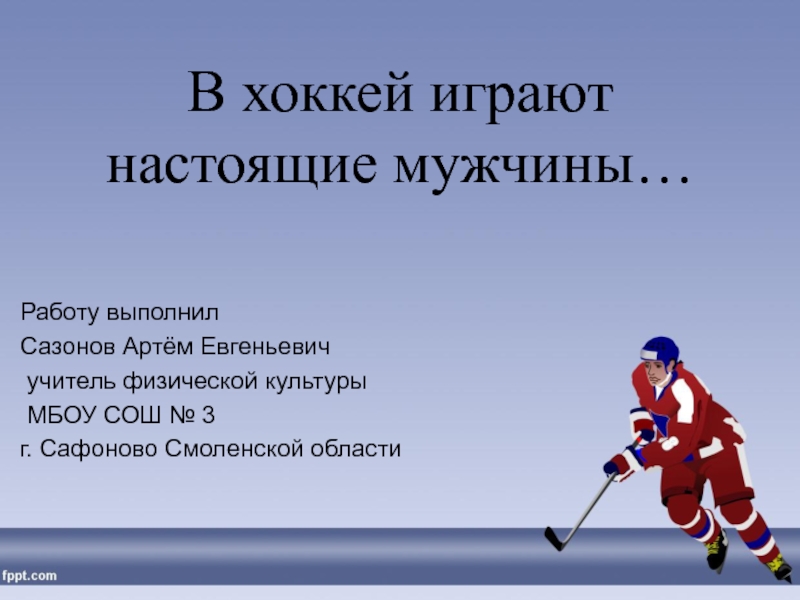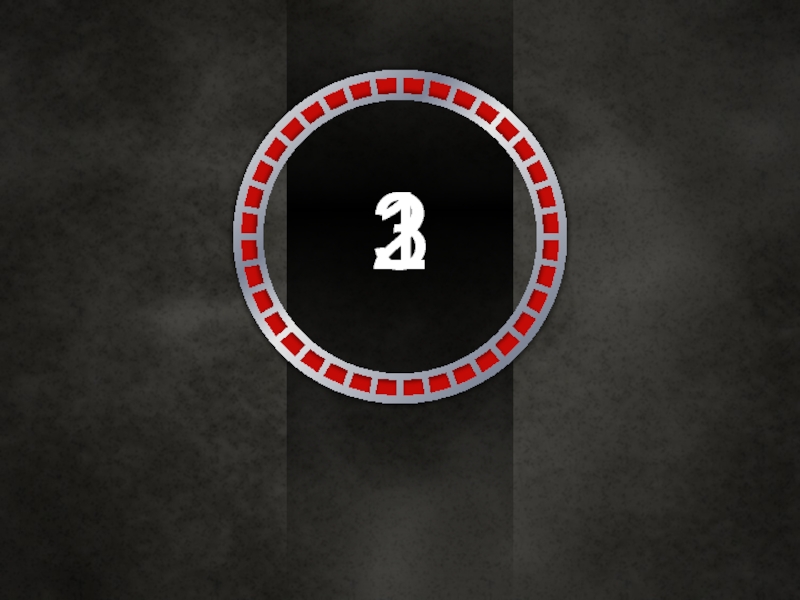Разделы презентаций
- Разное
- Английский язык
- Астрономия
- Алгебра
- Биология
- География
- Геометрия
- Детские презентации
- Информатика
- История
- Литература
- Математика
- Медицина
- Менеджмент
- Музыка
- МХК
- Немецкий язык
- ОБЖ
- Обществознание
- Окружающий мир
- Педагогика
- Русский язык
- Технология
- Физика
- Философия
- Химия
- Шаблоны, картинки для презентаций
- Экология
- Экономика
- Юриспруденция
Queue
Содержание
- 1. Queue
- 2. A queue is a first-in first-out (FIFO) abstract data
- 3. For example:Keyboard Buffer - you want the
- 4. There are several different types of queues
- 5. Array implementationhttps://www.youtube.com/watch?v=okr-XE8yTO8
- 6. Слайд 6
- 7. ?
- 8. Слайд 8
- 9. The queue supports the following operations:push -
- 10. ?q.Count - ?
- 11. ?What will be printed as a result of this code?
- 12. A Linear queue is constantly working its
- 13. 2. CircularUnlike linear queues Circular queues allow
- 14. Слайд 14
- 15. Скачать презентанцию
Слайды и текст этой презентации
Слайд 2A queue is a first-in first-out (FIFO) abstract data type that is
heavily used in computing. Uses for queues involve anything where
you want things to happen in the order that they were called, but where the computer can't keep up to speed.Слайд 3For example:
Keyboard Buffer - you want the letters to appear
on the screen in the order you press them. You
might notice that when your computer is busy the keys you press don't appear on the screen until a little while after you press them. When they do appear they appear in the order you press them.Printer Queue - you want print jobs to complete in the order you sent them, i.e. page 1, page 2, page 3, page 4 etc. When you are sharing a printer several people may send a print job to the printer and the printer can't print things instantly, so you have to wait a little while, but the items output will be in the order you sent them.
Слайд 4There are several different types of queues such as the
ones described below:
Linear.
In this queue form, elements are able to
join the queue at one end and can exit from the queue at the other end. First In First Out (FIFO).Head
Tail
Слайд 9The queue supports the following operations:
push - (Enqueue) - the
operation of inserting a new element,
pop - (Dequeue) - the
operation to delete a new item,count - check the number of items in the queue.
Слайд 12A Linear queue is constantly working its way through memory,
it does not re-use memory. As a result if a
large number of items are being added and removed from the list this means the lists will grow very large without containing much data. It is not a very efficient solution and will use up large amounts of memory.Слайд 132. Circular
Unlike linear queues Circular queues allow for memory to
be re-used:
Generally, a circular buffer requires three pointers:
one to the actual
buffer in memoryone to point to the start of valid data
one to point to the end of valid data

